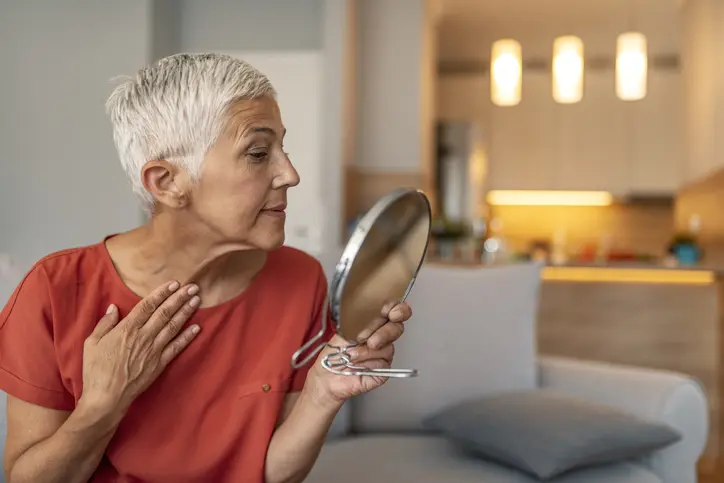By Ross Pelton, RPh, PhD, CCN
Scientific Director, Essential Formulas
The surface of your body is colonized by a vast population of microorganisms, which is referred to as your skin microbiome. It is estimated that a single square centimeter of skin can contain up to one billion bacteria.
The skin and skin microbiome have many vital functions, including providing a physical barrier that protects against pathogens, regulating temperature, water retention, inflammation, and aspects of the immune system.
Bi-directional communication between the gut and the brain is well documented. Newer studies have now established that the gut and brain also communicate with the skin. This concept was first expressed in 2010 when Dr. Petra Arck proposed a unifying communication system called the Gut-Brain-Skin Axis.i
Each of these organ systems can communicate with each other. For example, it is well known that gut dysbiosis is associated with skin conditions like acne, psoriasis, and eczema.ii Similarly, with psychological stress, the brain can send signals to the skin that promote inflammation.
SKIN DYSBIOSIS
Dysbiosis, (which is also called dysbacteriosis), is a term that indicates an imbalance of bacteria in or on the body. While dysbiosis most commonly refers to a microbial imbalance in the GI tract, it can also denote an imbalance of bacteria on the skin, known as skin dysbiosis.
The gut microbiome is frequently altered in people with skin diseases.iii More recent studies have confirmed that skin dysbiosis is present in skin diseases such as atopic dermatitis, psoriasis, rosacea, acne vulgaris, dandruff, and even skin cancer.iv
SHOCKING FREQUENCY OF SKIN DISEASES
A large study conducted by the Mayo Clinic between 2005 and 2009 revealed that skin disorders are the most common reasons people visit their doctor.v According to the Mayo Clinic study, 43% of patients made a doctor’s appointment for a skin disorder compared to 33.6% for joint conditions, 23.9% for back problems, 22.4% for cholesterol problems.
Cancer is still the #1 killer in the U.S., nearly half of Americans have high blood pressure, and over one-third of Americans have diabetes or prediabetes. Thus, it was surprising to learn that skin disorders are responsible for more doctor visits than these more common high-profile diseases. The realization that skin diseases are associated with skin dysbiosis emphasizes the importance of maintaining a healthy skin microbiome.
BALANCE
Most of the bacteria in the gut and on the skin of healthy individuals are beneficial. Balance is the key to both a healthy gut microbiome and a healthy skin microbiome. The gut and skin of all people contain some potentially harmful bacteria. Still, when your microbiomes are predominantly populated with beneficial bacteria, the harmful bacteria cannot multiply and cause problems. Thus, it is essential to realize that skin dysbiosis, like gut dysbiosis, is primarily a microbiome problem being out of balance.
SKIN POSTBIOTIC METABOLITES
In 2019, my article titled Postbiotic Metabolites: The New Frontier in Microbiome Science explained that probiotic bacteria in the GI tract produce health-regulating compounds we refer to as postbiotic metabolites.vi We are now learning that beneficial bacteria that live on your skin also produce important health-regulating postbiotic metabolites.
One important class of these compounds is called antimicrobial peptides (AMPs). Many beneficial skin bacteria strains make various antimicrobial peptides, which suppress the growth of pathogens and accelerate wound healing.vii
Staphylococcus aureus is a strain of bacteria associated with numerous skin diseases such as eczema, atopic dermatitis, psoriasis, and a high level of S. aureus is an indicator of skin dysbiosis. The skin of healthy individuals contains strains of bacteria that produce AMPs which suppress the growth of S. aureus.viii
A species of skin bacteria named Propionibacterium produces an antimicrobial peptide called Enterocin AS-48. It has been shown to have significant antibacterial activity against 23 different bacteria strains commonly associated with acne.ix
Staphylococcus epidermidis is a beneficial strain of skin bacteria found to produce a postbiotic metabolite named butyric acid. Butyric acid helps to maintain a healthy skin microbiome due to its anti-inflammatory activity.x
In a survey of bacteria isolated from seven body sites, researchers were able to identify 21 different previously unknown postbiotic antimicrobial peptides that exhibited activity against a wide range of skin pathogens.xi
The growing understanding that different species of beneficial skin bacteria produce and secrete postbiotic metabolites that help to maintain a healthy skin microbiome is an exciting new area of science.
TOPICAL PROBIOTICS:
The first record of topical probiotic therapy occurred in the Journal of Cutaneous Diseases in 1912, which reported the topical application of Lactobacillus bulgaricus to treat acne.xii However, it would take nearly 100 years before dermatologists understood how beneficial topical probiotics could be to treat skin diseases. In 2014, the American Academy of Dermatologists issued a statement calling probiotics a “Beauty Breakthrough.”
HOW TO PROTECT YOUR SKIN MICROBIOME
Here is a list of critical factors that are important for creating and maintaining a healthy skin microbiome:
- Eat a healthy diet: avoid processed foods, minimize sugar, consume a high quantity and diversity of fiber-rich foods.
- Understand that an allergy or sensitivity to food(s) or environmental agent (soap, detergent, household cleaning agent, cosmetics) can cause inflammatory skin diseases.
- Get adequate omega-3 fatty acids in the diet or as nutritional supplements. Omega-3 fats regulate inflammation, immune function, and overall skin health—recommendation: Dr. Ohhira’s Essential Living Oils™.xiii
- Protect skin from excessive exposure to UV light. Dr. Ohhira’s Propolis Plus contains ingredients that reduce inflammation and astaxanthin, which is a powerful antioxidant that protects skin from free radical damage due to UV rays from sunlight.
- Maintain a healthy gut microbiome. Studies have reported a strong link between gut dysbiosis and inflammatory skin diseases.xiv The gut communicates with the skin via the Gut-Skin Axis. Recommendation: Dr. Ohhira’s Probiotics®
- Read the book Clean: The New Science of Skin by James Hamblin, MD. Dr. Hamblin suggests stopping or dramatically reducing the use of shampoos, conditioners, and products that damage the skin microbiome. Select natural products that promote skin integrity and a beneficial skin microbiome.
- Use Dr. Ohhira’s skincare products, including Kampuku Beauty Bar, Magoroku Skin Lotion, Hadayubi Lavender Moisturizer, and Collagen Plus. These products contain natural ingredients that help maintain strong collagen fibers and skin elasticity, deodorize and moisturize the skin and add healthy postbiotic metabolites to promote a healthy skin microbiome.






